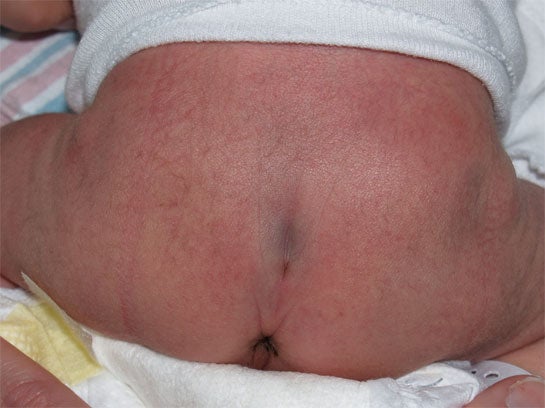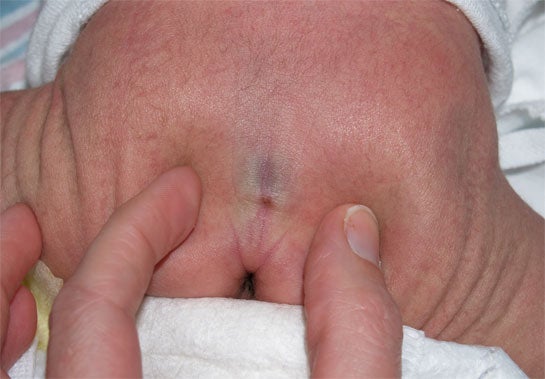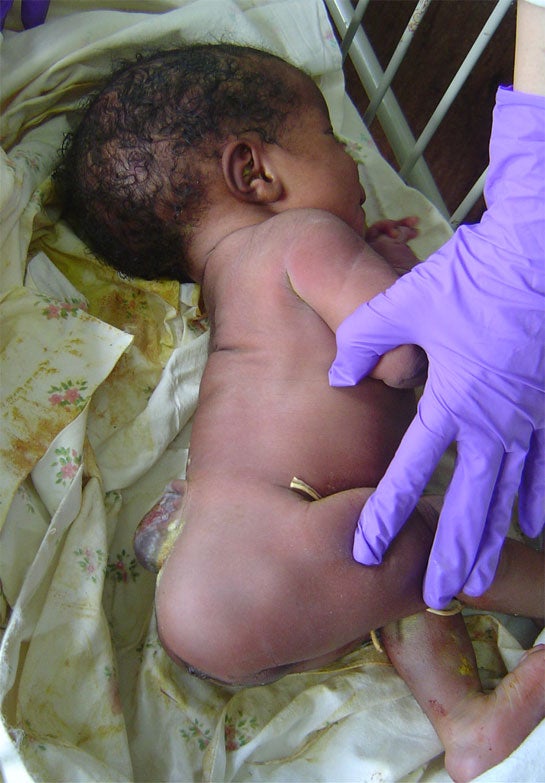BACK, SPINE, ANUS
Support the infant's head when you turn it from back to stomach. Put one hand behind the head and slip the other hand/arm under the infant's chin and stomach and turn over. Let the infant lie on his/her stomach (with legs pulled up). Use the same method to turn the infant from front to back.
The infant may be able to lift the head momentarily.
Inspect the spine and shoulders for straightness and flexibility. Check the base of the spine for a pigmented nevus with a tuft of hair. The infant may have a pilonidal dimple, a small dimple at the base of the spine without connection to the spinal cord. This is often associated with spina bifida occulta.
|
|
|
|
|
Sacral Dimple |
Stretching spinal dimple to make sure the base is intact. |
Meningomyelocele-an external sac containing meninges and cerebrospinal fluid. |
Pictures used with permission Dr. Janelle Aby, Stanford Medical School, Palo Alto, CA
This is a good time to elicit the Galant reflex and check for Mongolian or Slate-grey spots. Check that there is one anus. Passage of a meconium stool either in utero or within the first 24 hours of birth signifies a patent anus. Rectal temperature is no longer used to check for anal patency. When you have completed the exam, turn the infant to the back, make sure the diaper is clean and fastened. Redress the infant. This is a good time to ask the parents if they want you to show them how to wrap the baby. First time parents and the father are usually interested in this education. Review parental education on handling and sleep patterns (see sidebar).



